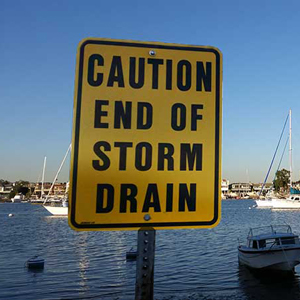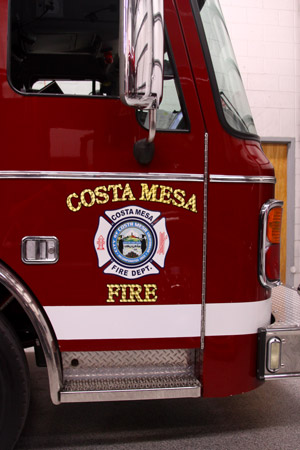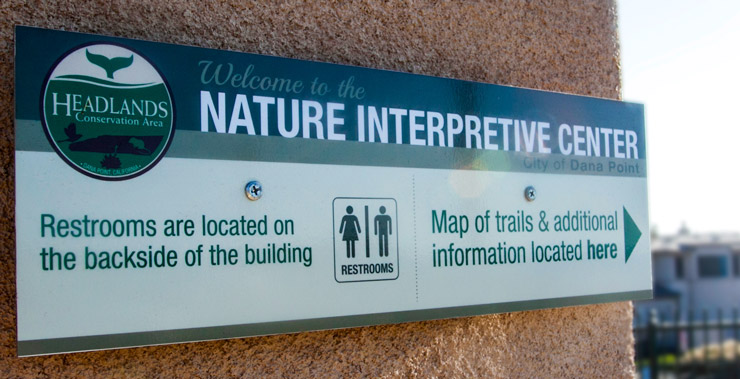Orange County Signs & Decals
Signs provide vital information to passers-by, from displaying locations, to communicating a branding concept. They can come in many different forms, with each having their own advantages. The usefulness of such signs is determined by the information that they are intended to convey.
Wayfinding signage, decals, and city branding all provide a venue for message conveyance, but are developed and employed in distinct ways that are most advantageous for their intended purpose. When used together, they can offer businesses and governmental organizations a comprehensive and effective marketing campaign.
Decals
Decals, which are also referred to as labels or stickers, can be used on a variety of surfaces such as vehicles, mirrors, wood, brick, concrete, carpet, and many different types of fabrics. Their multipurpose nature makes them extremely convenient to apply and has contributed to their widespread use. They are made by transferring a printed image to any of the aforementioned surfaces.
This printing can be done via two methods:
- Thermal printing: a process that produces images by applying heat. The result is a clean-looking decal that resists fading caused by UV rays. Since thermal printing relies on ribbons, it is limited in its range of color and dimensions.
- Solvent printing: the preferred type of printing when the full range of color graphics is required since it employs a 7-color process. In addition, it also produces much larger decals and is generally used for commercial processes.
The decals are then cut into shape either by kiss-cutting or perforated-cutting. Kiss-cutting is best for stickers because it uses a laser to cut through the top layer of the decal, but simply “kisses” the bottom layer. This allows the bottom liner sheet to remain intact, and the user can then remove the sticker when they need it. In contrast, perforated-cutting goes through all of the layers and creates a series of small holes that can eventually be cleanly detached.
This produces a decal which consists of many different layers, from the paper face-stock onto which the printing is done, to the adhesive layer and the release-coating layer. Decals are especially useful for businesses because they are easy to remove, yet can stay applied for many years without wear if needed.
Additionally, decals can be used to display nearly any type of signage, from logos to wayfinding to banners.
Wayfinding Signs
 These types of signs are used to help people navigate physically by providing orientating information to them in a concise manner. They generally show directions or very simple instructions using basic visual cues. Wayfinding signs are characterized by their simple nature – good wayfinding signs do not require a lot of processing time and are very elementary. They do not contain frills of any kind and only depict the bare necessities of the message being conveyed. In fact, they are often used to minimize challenges related to navigation and increase safety in a variety of environments.
These types of signs are used to help people navigate physically by providing orientating information to them in a concise manner. They generally show directions or very simple instructions using basic visual cues. Wayfinding signs are characterized by their simple nature – good wayfinding signs do not require a lot of processing time and are very elementary. They do not contain frills of any kind and only depict the bare necessities of the message being conveyed. In fact, they are often used to minimize challenges related to navigation and increase safety in a variety of environments.
While wayfinding signs are generally used for navigation in an urban setting, they can also provide basic instruction or precautions. Since humans are quite visual, this type of signage strives to create a cognitive map inside the reader’s mind. This can be done by providing distinctive features, such as landmarks. The cognitive map can also be shaped by the visual aspects of the sign itself, such as the typeface, size, icons, contrast, colors, or patterns used in the design of the signage.
Regardless, the content of the sign should be easily recognizable, clean in appearance, and concise. In addition, wayfinding signs should be developed as a collection so that they all connect and provide a thematic image when contributing to the reader’s cognitive map.
There are four general types of wayfinding signs, which include:
- Information signs: provide basic data for the reader to interpret
- Directional signs: provide information that is orientating in nature
- Identification signs: provide a descriptive label for the object being examined
- Warning signs: provide cautionary messages
The characteristics of optimal wayfinding signs are readability and straightforwardness. Overall, their purpose is to be immediately understood and to minimize stress related to decision making (such as determining which direction to turn in a large building, or finding out where the emergency room is located), which is especially important in environments such as hospitals or public transportation settings. Within seconds, the reader must be able to determine their starting point and then decide their next steps.
 City Branding
City Branding
Place branding is an overarching type of branding which develops an intentionally-designed impression for locations. City branding, or municipal branding, is a subset of this and is specifically involved in communicating an image or certain ideas to different populations.
 Globalization has made city branding extremely popular, pushing cities to initiate branding campaigns to compete for a seemingly-limited market. City branding is a communication method which causes individuals to brand a city with a particular identity. It evokes emotion and positions the city within its market’s network of association.
Globalization has made city branding extremely popular, pushing cities to initiate branding campaigns to compete for a seemingly-limited market. City branding is a communication method which causes individuals to brand a city with a particular identity. It evokes emotion and positions the city within its market’s network of association.
City branding is often combined with wayfinding to create branded wayfinding using government signage. This involves integrating the city’s brand strategy with a wayfinding system, which creates a positive aesthetic and a coordinated system of experiences. A comprehensive city branding campaign may involve window graphics, event banners, city seals and other representative municipal images, street signage, printed flyers and posters, and more.
Strategic city branding can uplift the image of a city to make it desirable to both live and visit. Cities small and large can benefit from a cohesive municipal branding campaign to shape the image of their community as a tourist destination or industry hub.
Professional Signage
Distinct types of signage and printed graphics can be used to evoke tailored responses from different market segments. These can be implemented advantageously to accomplish many things, from providing instructions to marketing entire cities. For example, decals can be used to create straightforward signs that contribute to a consolidated wayfinding campaign. Used together, these different types of signage can translate into successful and informative public relations movements.







